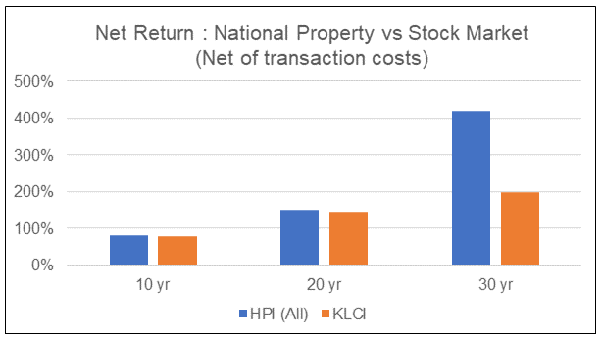
What does long-term investing differ from short-term investors? Long-term investors will accept short-term pain for long-term gain. They track dividends rather than stock prices and invest only in companies with the potential to double, triple, and even more over the next few years. This strategy is the only way you can guarantee your long-term success. This strategy takes less time as well as costs less. A quarterly checkup is sufficient. This is a great way to make sure your money doesn't get lost.
Long-term investment is about attitude, not timing
You must be a long-term investor and have the ability to see the long-term. You will show that you are focused on the long-term by your investment strategy, information, and philosophy. There are many aspects to long-term investing. They include a commitment to creating something of value, a long term perspective and the desire for a better world. It is essential to have the mindset that "the correct way" is better for long-term investments.

Long-term investors will choose carefully their investments and keep them in the market. Because they believe that long-term investments will ultimately reward them, a long-term investor will pay less attention to the short-term. This approach has historically rewarded long-term investors, but past performance is no guarantee of future results. Long-term investors should be aware of the potential risks.
They will accept short-term pain in order to gain long-term satisfaction.
A characteristic of long-term investors, is their willingness and ability to accept short-term pain for long-term success. Such attitudes can often be found in the character and culture of individuals and companies. They are not the result a particular investment philosophy or process. They are a result of an individual’s attitude toward risk-taking and reward. There are many aspects to the philosophy of long-term investment, and there is no single way to be successful.
They track dividends, but not stock prices
A growing dividend is a good choice for long-term investors. If you only focus on the dividend yield or choose unreliable companies, it is possible to make a mistake. Dividend growth investing emphasizes the company's stability rather than its dividend income. In 2008, more than 120 companies ceased paying dividends and ninety more suspended them by March 2020. The good news is that dividend growth stocks remain a viable option.

They invest in companies with the potential to double, triple, and even go beyond over the next few decades.
It takes 3.2 Years to double your money. For every $2,000 of your money today, it will take 3.2 more years to double that amount. Your money will increase by two to three times in 10 years if it's worth $200,000 right now. Long-term investors invest in companies with a high chance of doubling, triple, or even thrice doubling their investment over several decades.
FAQ
How are shares prices determined?
Investors set the share price because they want to earn a return on their investment. They want to earn money for the company. So they buy shares at a certain price. If the share price increases, the investor makes more money. Investors lose money if the share price drops.
Investors are motivated to make as much as possible. This is why investors invest in businesses. They can make lots of money.
What is the difference in the stock and securities markets?
The whole set of companies that trade shares on an exchange is called the securities market. This includes stocks, bonds, options, futures contracts, and other financial instruments. Stock markets are usually divided into two categories: primary and secondary. The NYSE (New York Stock Exchange), and NASDAQ (National Association of Securities Dealers Automated Quotations) are examples of large stock markets. Secondary stock market are smaller exchanges that allow private investors to trade. These include OTC Bulletin Board (Over-the-Counter), Pink Sheets, and Nasdaq SmallCap Market.
Stock markets have a lot of importance because they offer a place for people to buy and trade shares of businesses. The price at which shares are traded determines their value. A company issues new shares to the public whenever it goes public. These shares are issued to investors who receive dividends. Dividends are payments that a corporation makes to shareholders.
Stock markets are not only a place to buy and sell, but also serve as a tool of corporate governance. Boards of directors, elected by shareholders, oversee the management. They ensure managers adhere to ethical business practices. If a board fails in this function, the government might step in to replace the board.
What are the benefits of investing in a mutual fund?
-
Low cost - buying shares directly from a company is expensive. Buying shares through a mutual fund is cheaper.
-
Diversification – Most mutual funds are made up of a number of securities. When one type of security loses value, the others will rise.
-
Professional management - professional managers make sure that the fund invests only in those securities that are appropriate for its objectives.
-
Liquidity- Mutual funds give you instant access to cash. You can withdraw your funds whenever you wish.
-
Tax efficiency- Mutual funds can be tax efficient. As a result, you don't have to worry about capital gains or losses until you sell your shares.
-
There are no transaction fees - there are no commissions for selling or buying shares.
-
Mutual funds are easy to use. All you need is a bank account and some money.
-
Flexibility - you can change your holdings as often as possible without incurring additional fees.
-
Access to information - you can check out what is happening inside the fund and how well it performs.
-
You can ask questions of the fund manager and receive investment advice.
-
Security - you know exactly what kind of security you are holding.
-
Control - The fund can be controlled in how it invests.
-
Portfolio tracking: You can track your portfolio's performance over time.
-
Ease of withdrawal - you can easily take money out of the fund.
What are the disadvantages of investing with mutual funds?
-
Limited choice - not every possible investment opportunity is available in a mutual fund.
-
High expense ratio: Brokerage fees, administrative fees, as well as operating expenses, are all expenses that come with owning a part of a mutual funds. These expenses can impact your return.
-
Lack of liquidity - many mutual fund do not accept deposits. These mutual funds must be purchased using cash. This restricts the amount you can invest.
-
Poor customer service - there is no single contact point for customers to complain about problems with a mutual fund. Instead, you will need to deal with the administrators, brokers, salespeople and fund managers.
-
Rigorous - Insolvency of the fund could mean you lose everything
How are securities traded?
The stock exchange is a place where investors can buy shares of companies in return for money. To raise capital, companies issue shares and then sell them to investors. These shares are then sold to investors to make a profit on the company's assets.
Supply and demand determine the price stocks trade on open markets. When there are fewer buyers than sellers, the price goes up; when there are more buyers than sellers, the prices go down.
Stocks can be traded in two ways.
-
Directly from the company
-
Through a broker
Statistics
- Our focus on Main Street investors reflects the fact that American households own $38 trillion worth of equities, more than 59 percent of the U.S. equity market either directly or indirectly through mutual funds, retirement accounts, and other investments. (sec.gov)
- Individuals with very limited financial experience are either terrified by horror stories of average investors losing 50% of their portfolio value or are beguiled by "hot tips" that bear the promise of huge rewards but seldom pay off. (investopedia.com)
- Ratchet down that 10% if you don't yet have a healthy emergency fund and 10% to 15% of your income funneled into a retirement savings account. (nerdwallet.com)
- The S&P 500 has grown about 10.5% per year since its establishment in the 1920s. (investopedia.com)
External Links
How To
How to Trade on the Stock Market
Stock trading is the process of buying or selling stocks, bonds and commodities, as well derivatives. The word "trading" comes from the French term traiteur (someone who buys and sells). Traders trade securities to make money. They do this by buying and selling them. It is one of the oldest forms of financial investment.
There are many options for investing in the stock market. There are three basic types: active, passive and hybrid. Passive investors watch their investments grow, while actively traded investors look for winning companies to make a profit. Hybrid investors take a mix of both these approaches.
Index funds that track broad indexes such as the Dow Jones Industrial Average or S&P 500 are passive investments. This method is popular as it offers diversification and minimizes risk. Just sit back and allow your investments to work for you.
Active investing means picking specific companies and analysing their performance. The factors that active investors consider include earnings growth, return of equity, debt ratios and P/E ratios, cash flow, book values, dividend payout, management, share price history, and more. Then they decide whether to purchase shares in the company or not. If they believe that the company has a low value, they will invest in shares to increase the price. They will wait for the price of the stock to fall if they believe the company has too much value.
Hybrid investing combines some aspects of both passive and active investing. For example, you might want to choose a fund that tracks many stocks, but you also want to choose several companies yourself. In this case, you would put part of your portfolio into a passively managed fund and another part into a collection of actively managed funds.